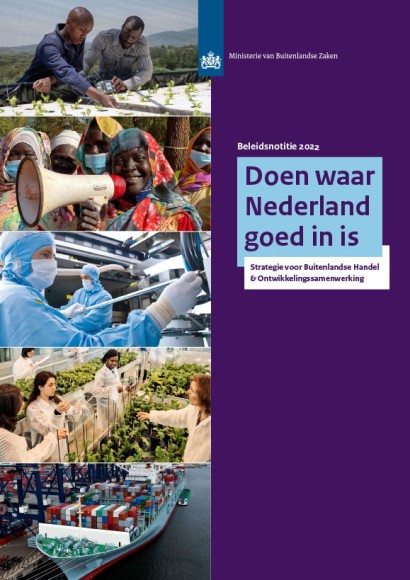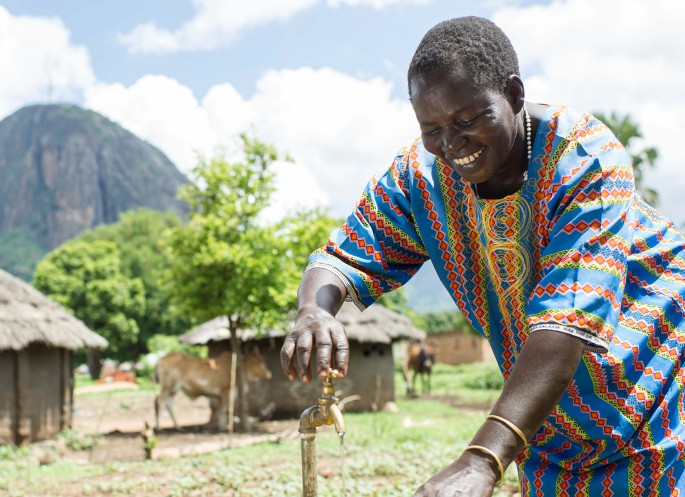Climate, adaptation and water: how firm are the promises of Minister Schreinemacher?
In the coming years, the Netherlands will invest more in international climate policy, according to the recently presented policy memorandum 'Doing what the Netherlands is good at'. In comparison with the previous government term, half a billion will be added. Water remains an important theme. Yet Dieneke van der Wijk, managing director of Simavi, is critical.
In 2025, 1.8 billion euros will go to climate finance, Minister Liesje Schreinemacher announced in the new policy memorandum, which will be discussed in the House after the summer recess. This means that the Netherlands will be better able to keep to the agreements that were previously made in Copenhagen and Paris. There it was promised that richer countries would jointly allocate $100 billion a year between 2020 and 2025 for climate measures in poorer countries.

Local climate solutions
These measures are crucial, also when it comes to the human rights to water and sanitation. It is Simavi's mission to overcome barriers for women and girls to claim their human rights to water and sanitation. Because 90 percent of all climate disasters have to do with water, the climate crisis is mainly a water crisis. This requires local solutions and good financing. Until now, however, the Netherlands has failed to deliver its fair share. Good news, then, that more money is being earmarked for this.
Half for climate adaptation
Also good news is that half of this – according to international agreements – will go to adaptation measures. The new strategy of the Minister for Foreign Trade and Development Cooperation states that the Netherlands wants to help developing countries to better protect themselves against weather extremes such as drought, flooding and heat waves. “Other donors worldwide make relatively little money available for climate adaptation, which is why the government is taking action and will continue to focus strongly on adaptation with specific attention to the poorest.”
Climate change costs are rising fast
Unfortunately, it’s not all good news, as the costs for developing countries to reduce their CO2 emissions and adapt to climate change are rising rapidly. For the latter alone, the required investments are estimated at 70 billion dollar per year. And that quickly increases to 155 to 330 billion per year in 2030 and 310 to 555 billion per year in 2050. Way more than the extra 100 billion dollars per year – of which only 30 billion now goes to adaptation. That is why it has already been agreed to set a new, higher target in 2025. This means that more money than the 1.8 billion euros that the Minister is now announcing will have to be allocated in 2025.
Concerns about privately mobilized financing
Another concern is that public climate finance is only a relatively small part of the amount that Schreinemacher reserves: 900 million euros in 2025. The other half must be mobilized privately. Compared to other countries, the Netherlands already relies heavily on private climate investments. Investments, of which it is often unclear whether they really reach the poorest of the poor.
As a rule, private climate investments must involve 'bankable solutions', i.e. climate investments with a revenue model. This makes it likely that a large part of this money goes mainly to middle-income countries and does not reach the very poorest. Even though it has been proven time and again that sustainable impact is based on public, multi-year programs that build on long-term relationships with local partners and work from local knowledge and solutions.
Acceleration needed to meet water and sanitation targets
Water remains an important theme for the Netherlands, but at the same time the Minister does not spend a lot of words on it in her memorandum. The objectives to which the Netherlands has committed itself – 'between 2016 and 2030, our country will give 30 million people access to clean drinking water and 50 million people access to sanitation' – remain the same.
The latest monitoring report from 2021 showed that we are far from being on track worldwide to achieve SDG6 (water and sanitation for everyone by 2030). An acceleration of no less than 4 times is necessary to achieve the goals. Since the Netherlands has achieved good results so far, a bit more ambition can really make a difference.
That is why, together with our partners in the NWP NGO platform, we advocate increasing the quantitative ambitions of the Netherlands. There is also still a lot to be achieved in terms of qualitative goals. For example, we regret that the attention to menstrual health is limited to a footnote in the new memorandum, and we would like to see more ambition to guarantee the ‘leave no one behind’-principle of the SDGs.
Pioneering role at UN water conference
Fortunately, the Minister shows ambition by explicitly naming the UN Water Conference in March 2023, which the Netherlands is co-hosting with Tajikistan, as a good opportunity for accelerated action when it comes to achieving the sustainable development goal for water and sanitation. How the government envisages this accelerated action will hopefully be better elaborated in the International Climate Strategy to be published this summer. We are looking forward to this – also with a view to the pioneering role that the Netherlands could and should play at the UN Water Conference – and we are happy to think along with the Minister.
Dieneke van der Wijk, Managing Director Simavi

